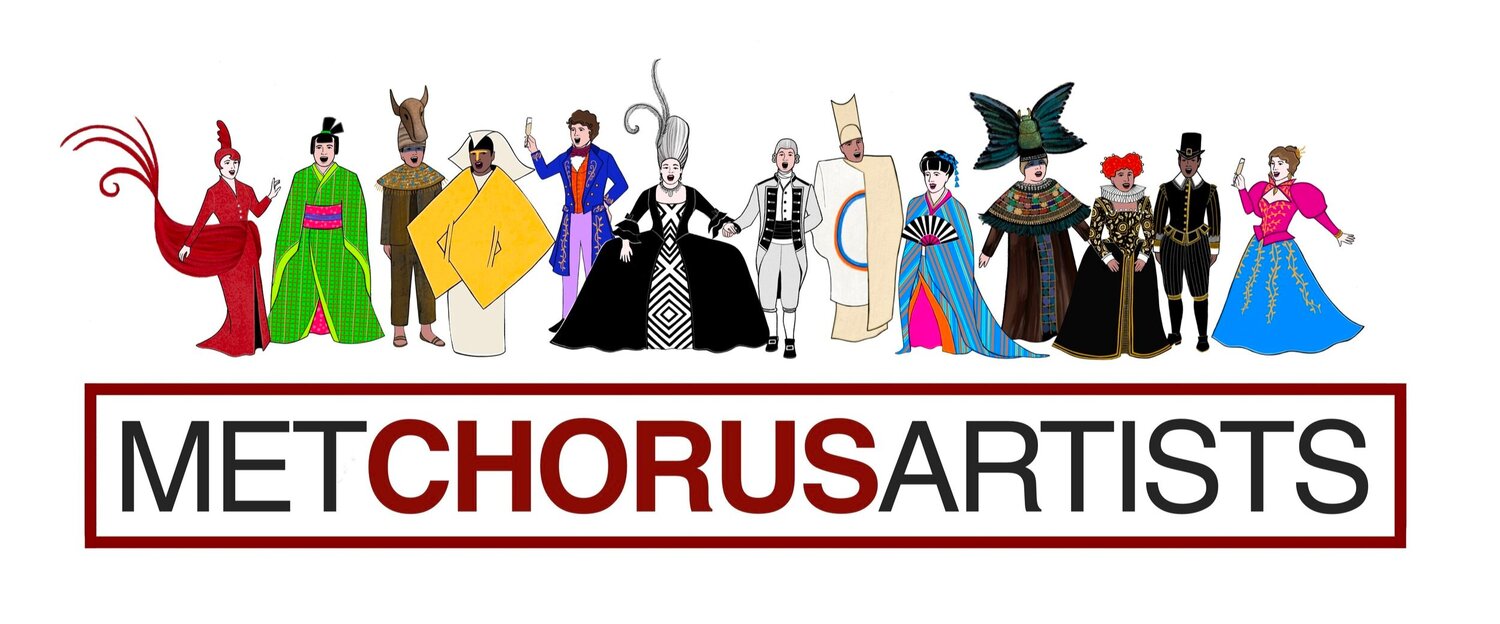Your Random Opera Trivia Questions - Answered!
by Lianne Coble-Dispensa and Mary Hughes
Ever found yourself pondering the “big questions”? You know, “what is the meaning of life?”, “where does morality come from?”, “why is the sky blue?”, and of course, “are there any operas with saxophones in them?” Well, then fret not, gentle reader. The Met Artists Newsletter is here to answer your burning operatic questions, both the ones you’ve been pondering and the ones you never thought needed answering. And who knows, maybe we can figure out that whole blue sky deal, too.
1. Which Met opera boasts a saxophone in the orchestration?
The instrumentation for Turandot is a who’s-who of the musical instrument family, including large numbers of the usual suspects, as well as a contrabass trombone, a contrabassoon, various gongs and tam-tams, a glockenspiel and a bass xylophone, and two offstage saxophones in E-flat, which accompany the offstage children’s chorus. But don’t be fooled into thinking Turandot is the only opera using these traditionally jazzy horns. Their unique timbre appears in Britten’s Billy Budd, Meyerbeer’s L’Africaine, and Berlioz’s Les Troyens, to name just a few.
2. Which recent met production has no violins in the pit?
One of the few— the VERY few—times the violins get a night off from their herculean Met orchestra job is when Phillip Glass’s Akhnaten is performing. Akhnaten was premiered in 1984 at the Stuttgart Opera House during a time when it was being restored, making the orchestra pit considerably smaller. Glass decided to cut the violin section due to both space and timbre/color considerations. As a result, Glass’s score takes on a richer, darker character, and everyone gets a little more elbow room.
3. What was the first opera performed at the Met?
The original Metropolitan Opera House, located at 1411 Broadway and occupying the whole block between 39th and 40th streets, opened its doors for the first time on October 22nd, 1883. Gounod’s Faust was performed that evening, with Italo Campanini playing the title role and Christine Nilsson playing the role of Marguerite. (For a hilarious look at how opera reviews used to be written, check out this review of the Met’s opening night performance, which can be found in the Met’s endlessly fascinating online archives.)
4. How many operas have premiered at the Met?
While the Met can lay claim to countless U.S. premieres, it has only hosted thirty world premieres since Puccini’s La Fanciulla del West in 1910. Some of the notable world premieres include Puccini’s Il Trittico, Samuel Barber’s Vanessa and Antony & Cleopatra (Cleopatra being the first opera performed in the current Metropolitan Opera House when it opened in 1966), John Corigliano’s The Ghost of Versailles, and Tan Dun’s The First Emperor.
5. How many live in HD performances has the Met produced?
The HD broadcast of Phelim McDermott’s wildly successful production of Akhnaten was the Met’s 133rd HD transmission since the inception of the program. The first HD broadcast was The Magic Flute on December 30, 2006.
6. What was the first American opera performed at the Met?
Prior to 1910, the Met had only performed operas written in foreign languages. However, that all changed on March 8th, 1910 with the Met premiere of Frederick S. Converse’s The Pipe of Desire, a one-act opera with mystical Celtic themes that marked the Met’s first premiere of an opera written in the vernacular by an American composer. (Note: the Boston Opera Company lays claim to the U.S. premiere of The Pipe of Desire, having performed the work in 1906.)
7. What is the most performed opera at the Met?
This should come as a surprise to almost no one: the winner of the Most Performed Opera contest is La La Bohème! Between 1900 (the year of La Bohème’s Metropolitan Opera premiere) and 2016, Puccini’s beloved opera has been staged in all but eight seasons. Additionally, our Zeffirelli production, premiered in 1981, is the most-seen production in ALL of the Met’s history, according to Met archivist John Pennino.
(Sources: this extremely interesting article from FiveThirtyEight, ENO.org, the Metropolitan Opera Archives, a particularly useful conversation on saxophone use in opera on grammophone.co.uk, Mia Bongiovanni, and everyone’s favorite resource, Wikipedia.)






